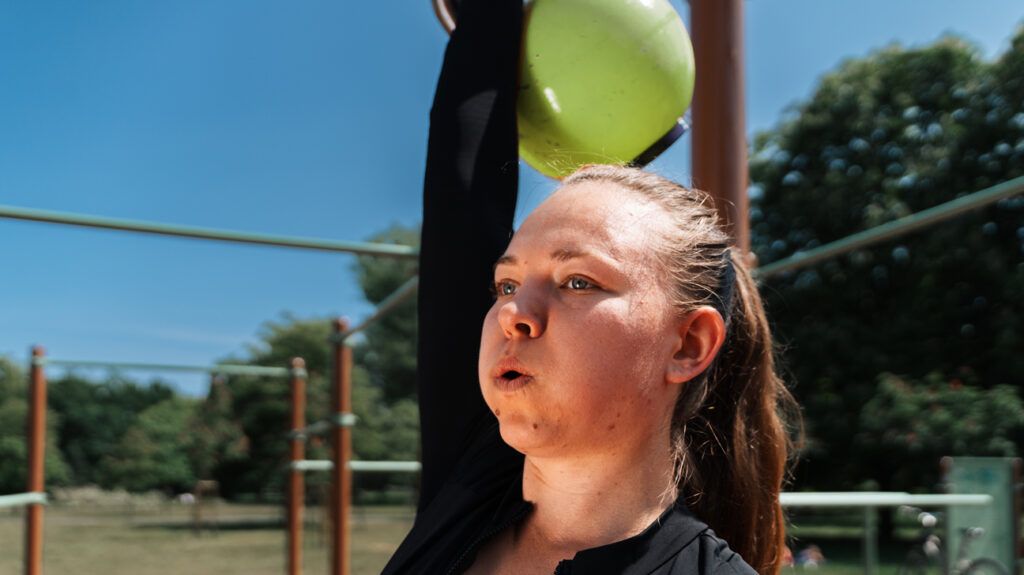People may develop shoulder bursitis due to repetitive overhead movements. Although doctors can often effectively treat the condition, some exercises may worsen it.
Shoulder bursitis, also known as subacromial bursitis, is when the cushions between a person’s shoulder joint become inflamed and painful. These cushions are called bursae.
Bursae are small, fluid-filled sacs located inside joints throughout the body. They function as cushions between the bones and tissues within the joints. They also reduce friction between the muscles and bones.
Certain exercises may worsen shoulder bursitis. A person can speak with a physical therapist or healthcare professional about the types of exercises to perform and avoid during recovery from shoulder bursitis.
This article lists and explains some exercises to avoid with shoulder bursitis.

Shoulder bursitis is a
If the bursae in the person’s shoulder swell up and become inflamed, they have shoulder bursitis. People with shoulder bursitis may also have swelling and redness or discoloration between the top of their arm bone and the tip of their shoulder.
Performing repetitive overhead activities can cause shoulder bursitis. Athletes and people with physically demanding jobs may be more likely to develop the condition due to the movements they repeatedly make in their daily activities. There can be many other causes, including minor trauma such as falls.
Shoulder bursitis does not normally have a long-term effect on a person’s daily life. It
However, some exercises can make shoulder bursitis worse. During recovery from forms of bursitis, people should rest the affected joint. They should try not to move the joint excessively and avoid activities that put pressure on it.
Read more about shoulder bursitis.
Lateral flys, also known as lateral shoulder flys, are a type of lateral raise exercise. During a lateral raise or lateral fly, people lift weights away from their body, out to their sides. This exercise strengthens the lateral deltoid muscles in the shoulders.
Repeated overuse of shoulder muscles can cause or worsen shoulder bursitis. Lateral flys may worsen shoulder bursitis because of the way they engage the shoulder muscles.
Upright rows are a strength exercise that involves weights. To perform one, a person holds a dumbbell or other weight at thigh level in front of their body and pulls it up toward their chest. It works the shoulder muscles, including the trapezoids, deltoids, and biceps.
Certain repetitive activities, such as shoulder rows, can worsen shoulder bursitis symptoms.
A bench press is a compound exercise. It works the upper body muscles, including the shoulders. There are several variations of the bench press. Each variation exercises a different group of muscles, some including the shoulder muscles.
During a traditional bench press, a person lays down horizontally on a bench. They grasp a barbell that is racked above them, lift it off the rack, lower it until it touches their chest, and then press the barbell straight back up.
Bench pressing involves repetitive overhead movement and
Learn how to tell the difference between bursitis and arthritis.
Many weight training exercises involve lifting weights above a person’s head. These exercises are often designed to strengthen several muscles, including the shoulder muscles.
An example of this is a shoulder press. A shoulder press is an exercise that targets the muscles in the shoulders and upper back. A person can be sitting upright or standing during a shoulder press. To perform the exercise, a person holds their arms above their head, with arms at 90 degrees and a dumbbell in each hand. The dumbbells should be roughly level with a person’s ears. Then, they press the weights toward the ceiling, straightening the arms, before returning to the starting position.
Activities that involve reaching overhead, such as shoulder presses, may worsen shoulder bursitis.
Behind-the-neck pulldowns also work the muscles of a person’s upper back and shoulders.
To perform a behind-the-neck pulldown, a person sits on a cable pulldown machine facing toward it. They then pull an overhead weight resistance bar down toward their body.
Behind-the-neck pulldowns involve repetitive shoulder movements, which may worsen shoulder bursitis.
Learn about exercises for shoulder tightness.
Tricep dips are compound exercises performed on a bench or bar. They work several muscles, including those of the shoulders.
To perform a tricep dip, a person holds their body weight up with their arms against the edge of the surface. They start with their elbows straight and their legs in front of them and parallel to the ground. They then lower their body toward the ground by bending their elbows and then push back up to the starting position.
Tricep dips involve repetitive shoulder movements and may worsen shoulder bursitis.
A pull-up is an exercise where a person pulls themselves up toward an overhead horizontal bar. They pull themselves upward until their chest touches the bar and then lower themselves back down again using their arms.
It uses multiple muscles, including the shoulder muscles. As repetitive overhead movements
The following are some questions people frequently ask about shoulder bursitis.
What aggravates shoulder bursitis?
Activities that put pressure on the shoulder can aggravate shoulder bursitis. Excessively moving the shoulder
How can I strengthen my shoulder with bursitis?
Certain exercises may safely help strengthen shoulder muscles with bursitis. Physiotherapists can help create an individualized shoulder strengthening and stretching exercise program for people with shoulder bursitis.
Can walking aggravate shoulder bursitis?
Repetitive overhead movements of the shoulder
With shoulder bursitis, the fluid-filled sacs called bursae in a person’s shoulder become inflamed and painful. Although there are many potential causes of shoulder bursitis, performing repetitive overhead movements is a common one.
Exercises that involve repeated movements over a person’s head can aggravate shoulder bursitis.
Avoiding these exercises can help prevent worsening shoulder bursitis. Healthcare professionals often treat the condition with physical therapy, injectable medications, or both. People should seek professional advice before making any changes to their exercise program.
